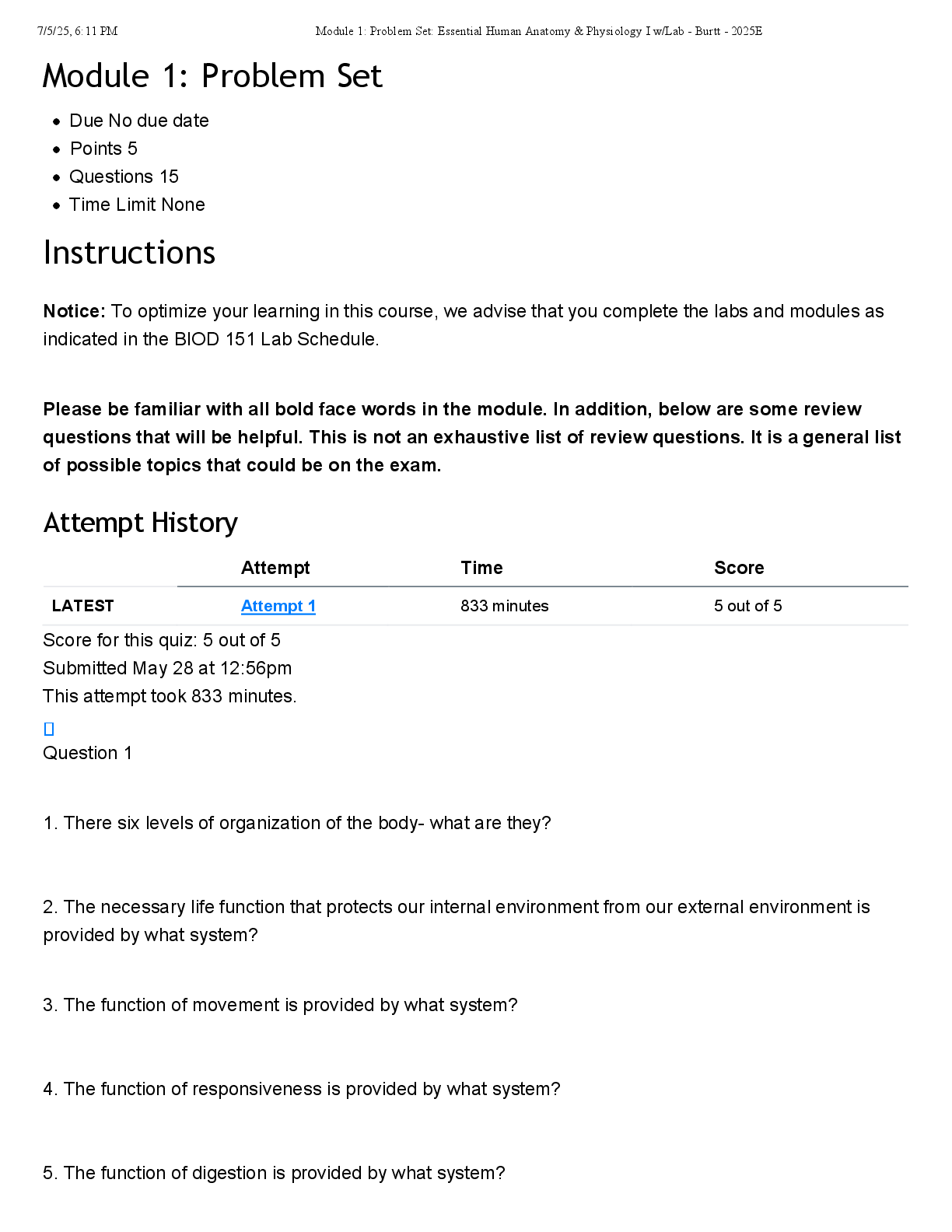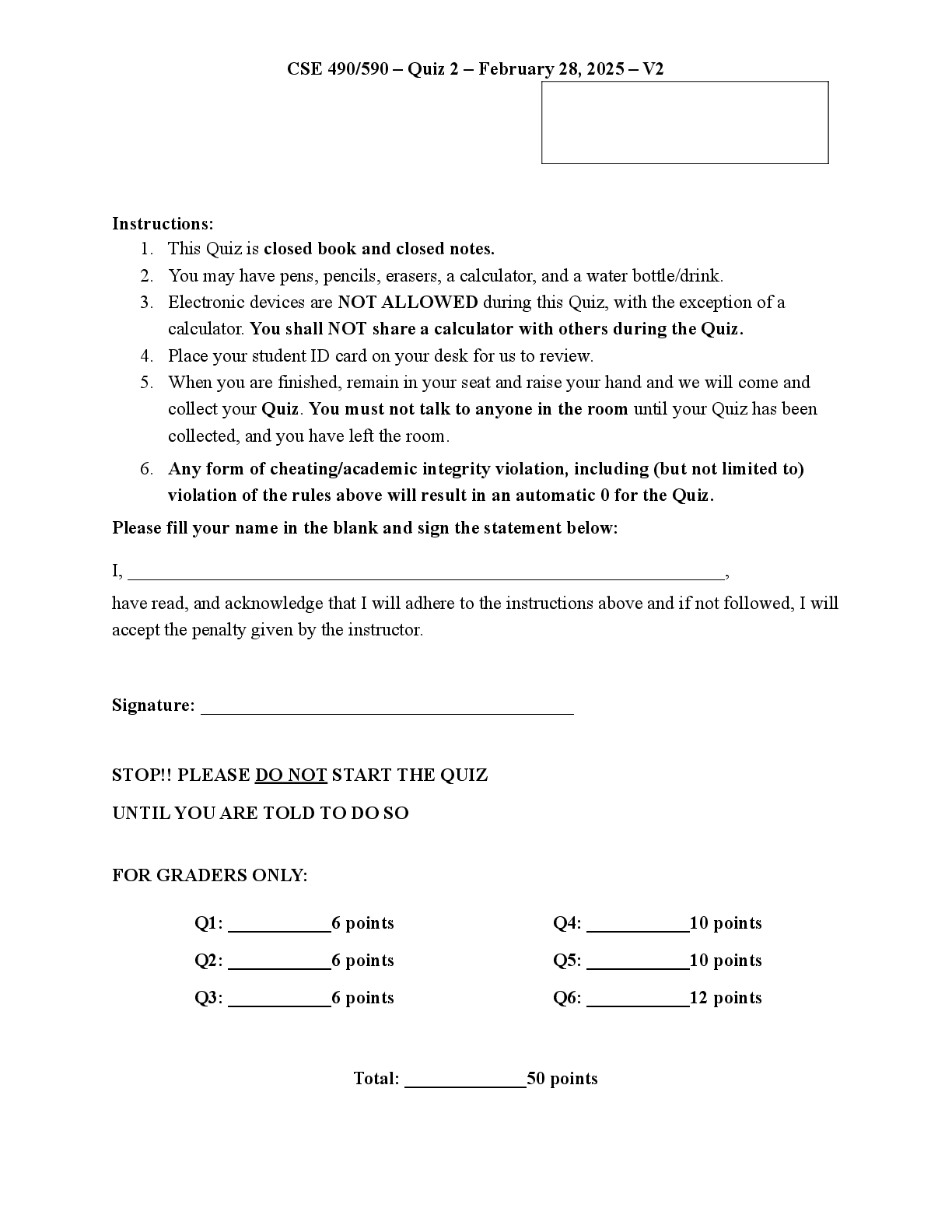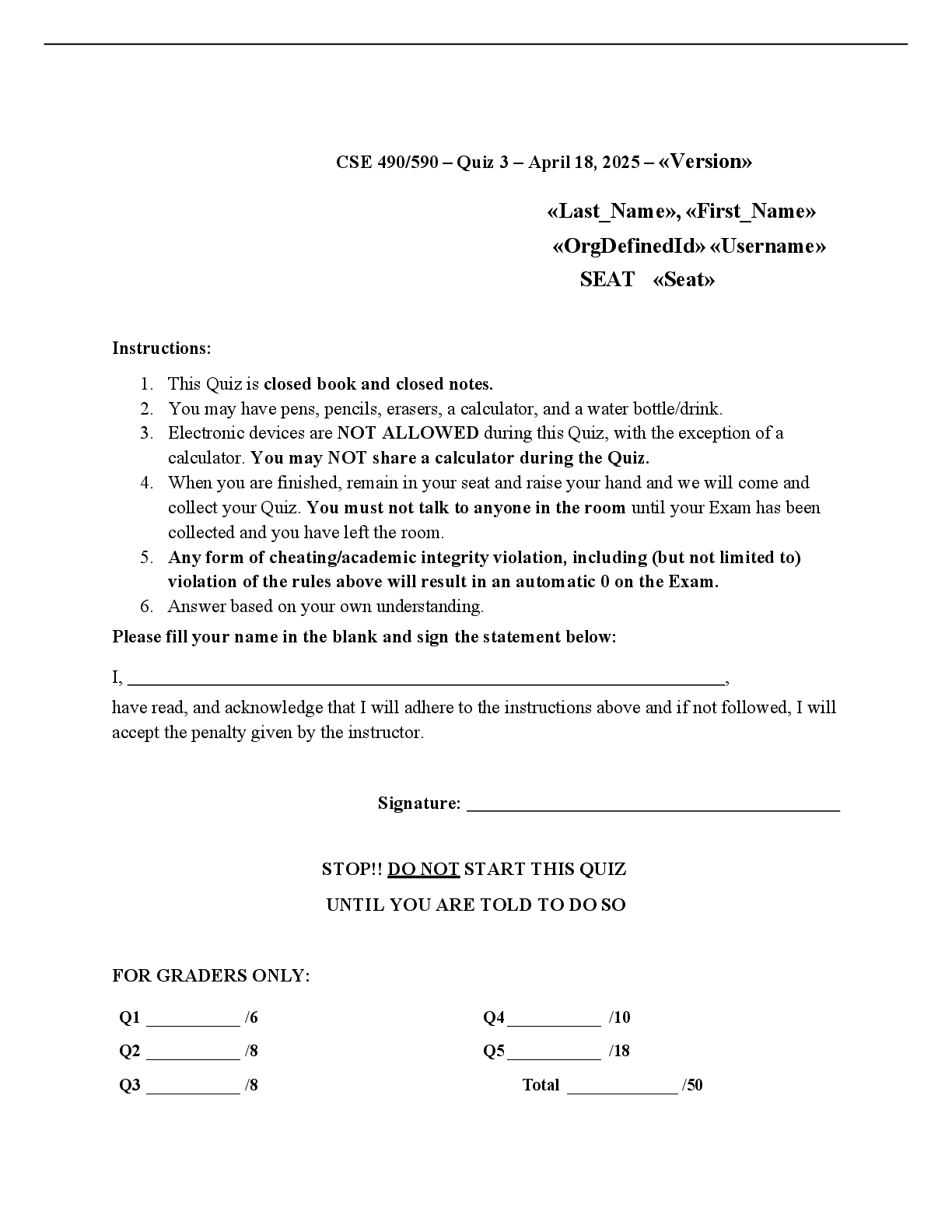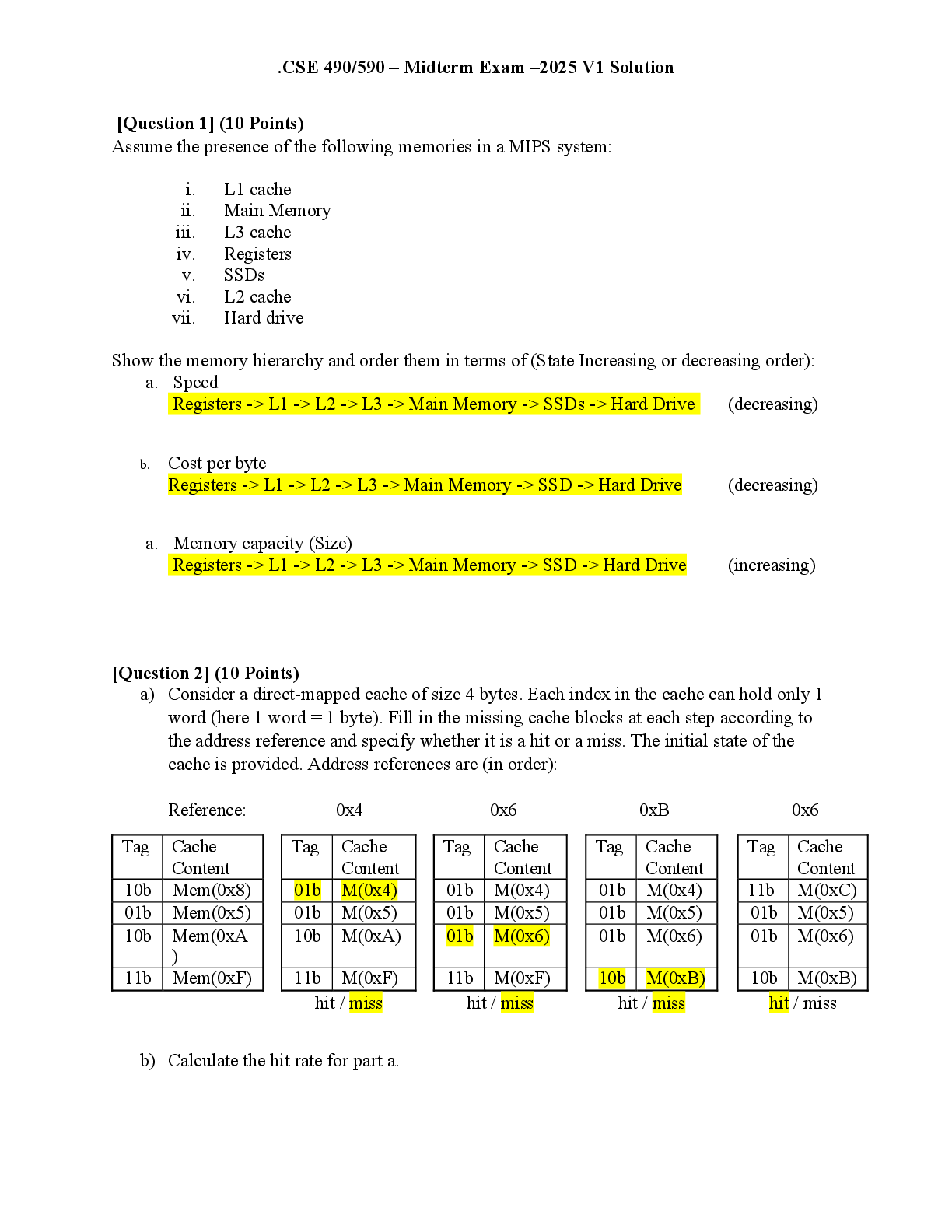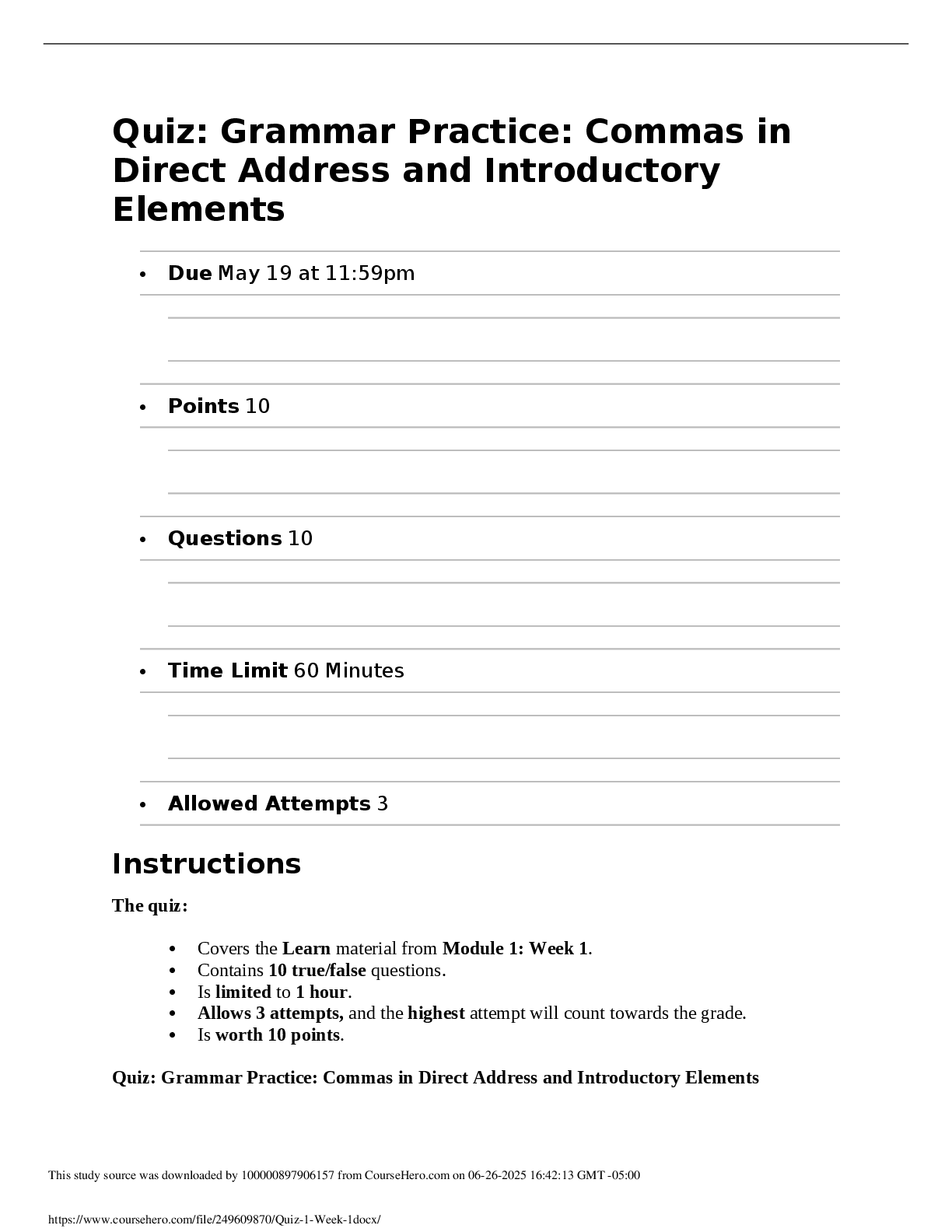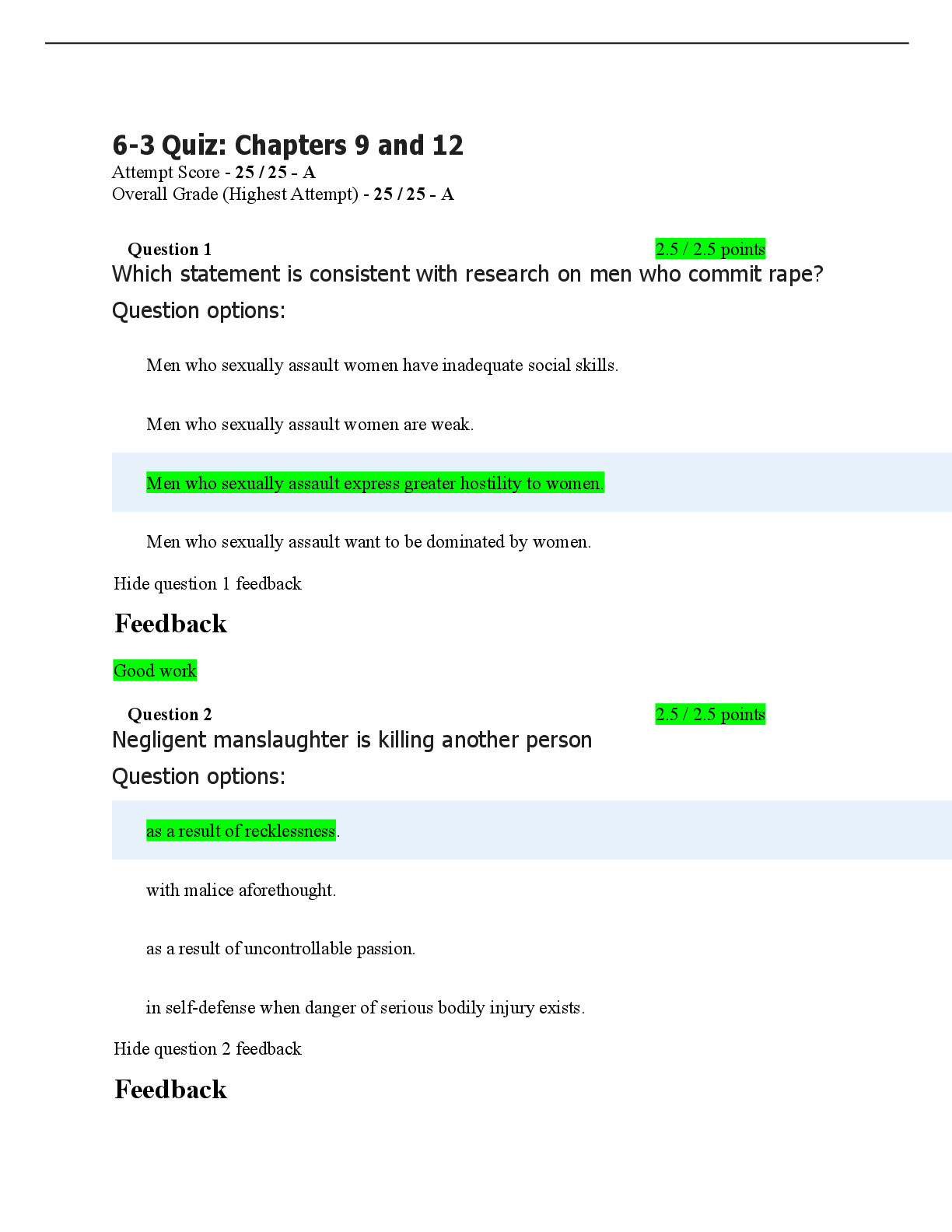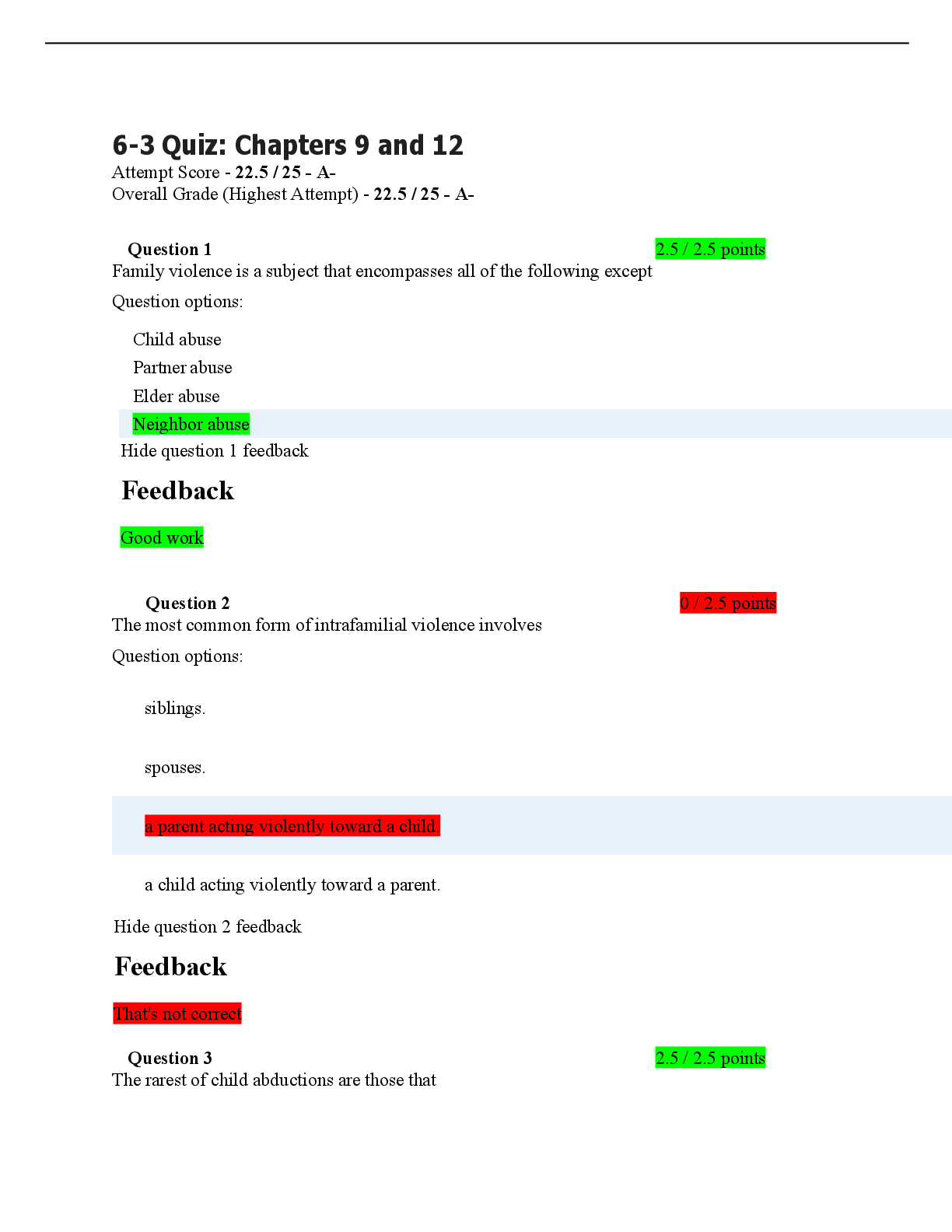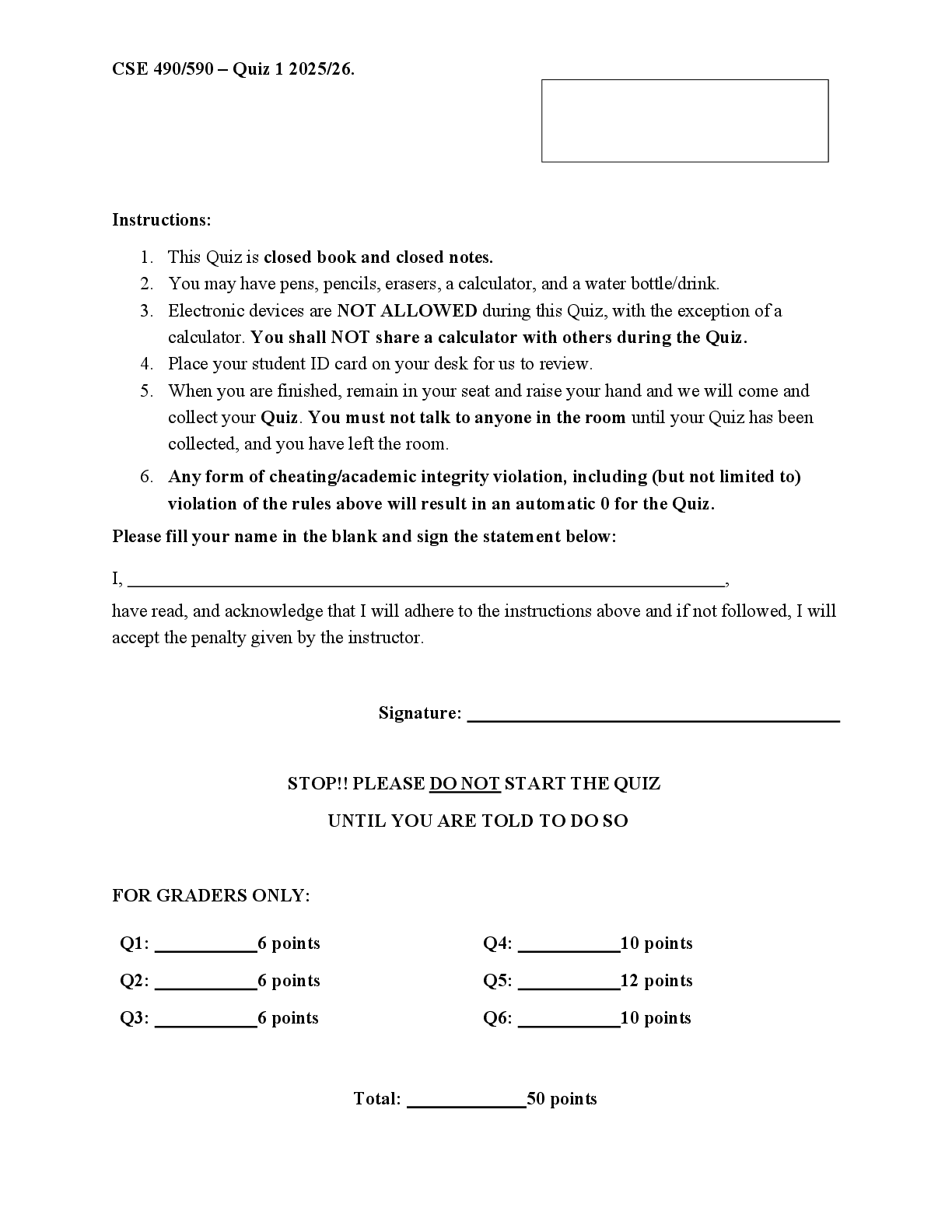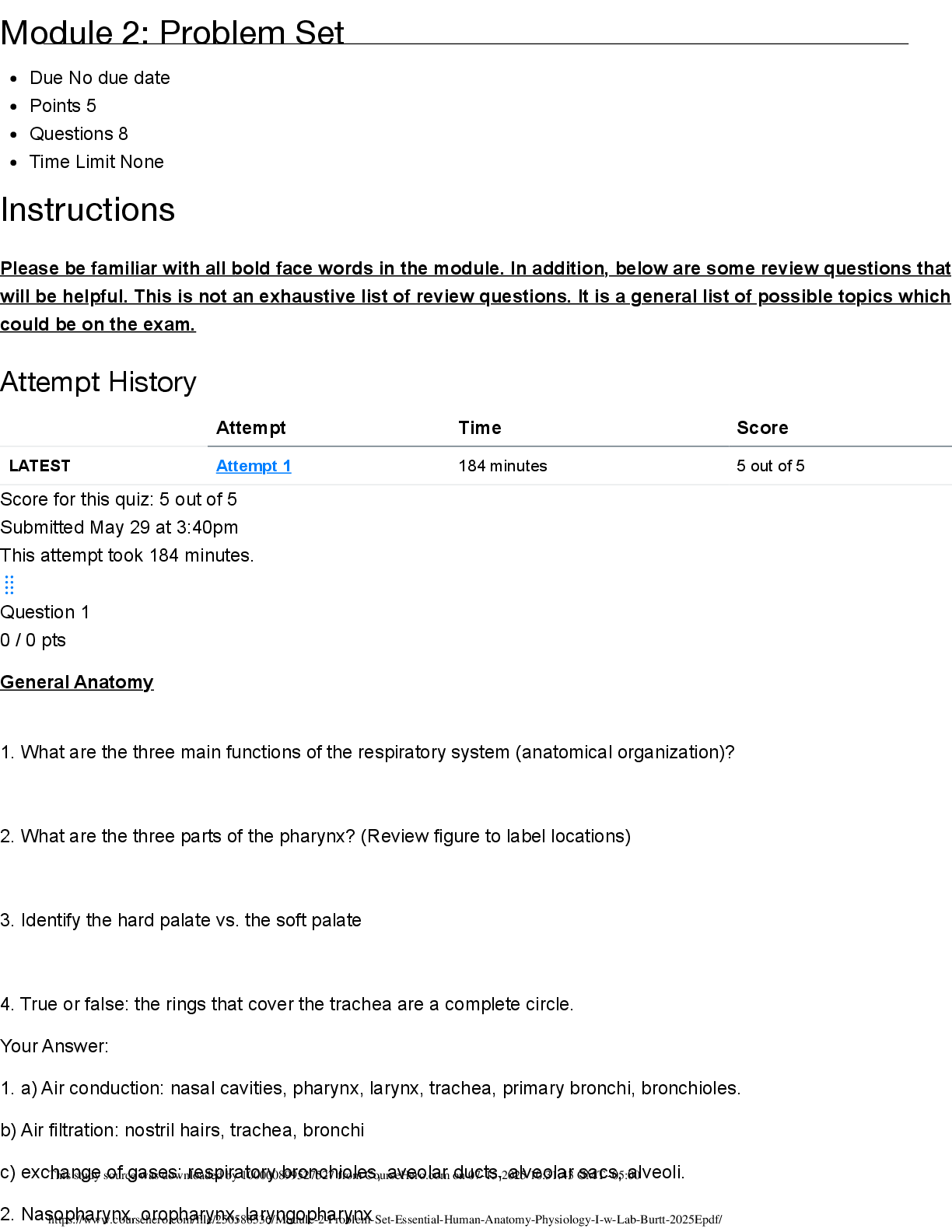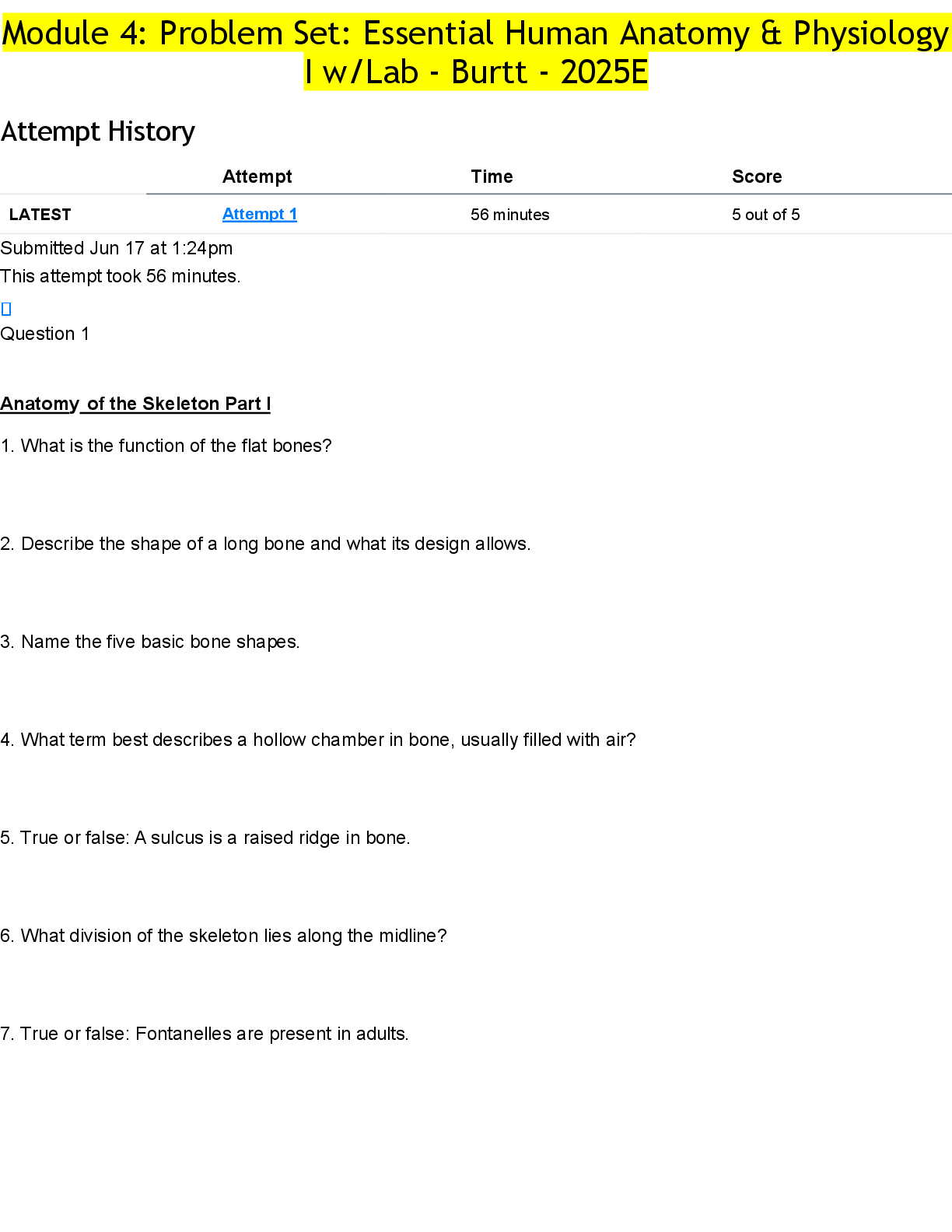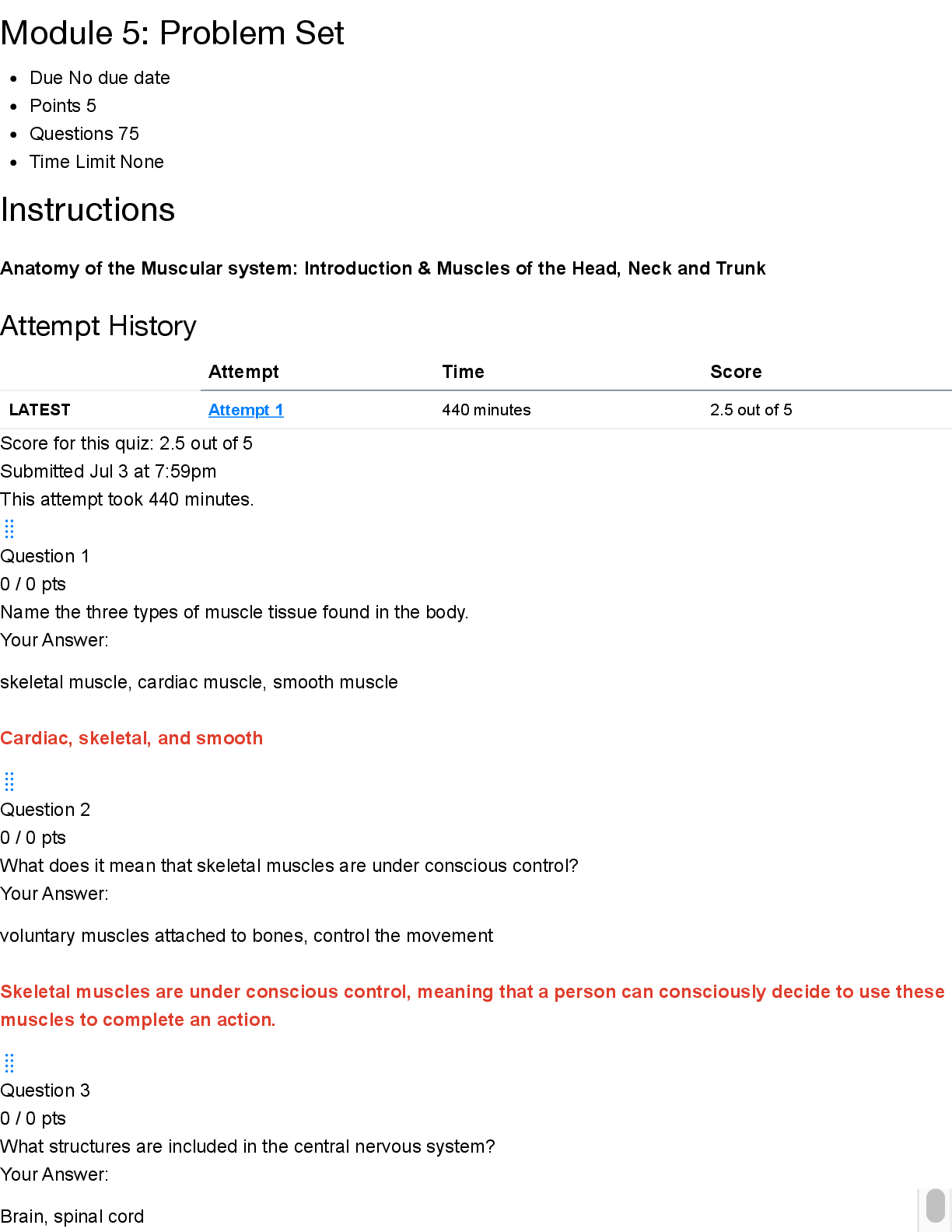Anatomy and Physiology - A&P 1 > Quiz > Portage Learning BIOD 151; Module 6: Problem Set: Essential Human Anatomy & Physiology I w/Lab - Bur (All)
Portage Learning BIOD 151; Module 6: Problem Set: Essential Human Anatomy & Physiology I w/Lab - Burtt - 2025E | Answered 2025/26.
Document Content and Description Below
Module 6: Problem Set: Essential Human Anatomy & Physiology I w/Lab - Burtt - 2025E Question 1 Introduction to the Endocrine System 1. Does the nervous system or the endocrine system react... faster to external/ internal stimuli? 2. What are the two major groups of hormones and what are their derivatives? 3. Hormones can react with cells that have what on their cell surface? 4. Do peptide or steroid hormones react faster? 5. True or false: Endocrine glands contain ducts and secrete their contents directly into an epithelial lining. Introduction to the Endocrine System 1. The nervous system 2. 1- Peptide (derived from proteins and catecholamines) 2- Steroids (derived from cholesterol) 3. Receptor 4. Peptide 5. False Question 2 Endocrine Organs 6. True or false: the hypothalamus and pituitary glands are in the abdomen. 7. The adrenal glands are found on top of the . 8. Be able to label the primary endocrine organs. 9. Name three secondary endocrine organs. Endocrine Organs 6. False 7. Kidneys 8. See figures in module 9. Heart, thymus, kidneys, gonads Question 3 The Negative and Positive Feedback Systems 10. Describe homeostasis in the body. 11. During negative feedback a hormone level is high. What happens to hormone production? 12. The action of oxytocin works through positive or negative feedback? The Negative and Positive Feedback Systems 10. (set-point) is a range in which the body acts to maintain all its levels for function. 11. The brain detects the hormone level is too high and hormone production is shut off. 12. Positive feedback. Question 4 The Hypothalamus and Pituitary glands 13. Why are the neurons in the hypothalamus called neurosecretory cells? 14. Axons travel from the hypothalamus terminate in what region of the brain? 15. The posterior pituitary gland stores what two main hormones? 16. What does ADH do in the body? 17. What hormone stimulates the release of milk from the mammary glands? The Hypothalamus and Pituitary glands 13. They are cells that respond to neurotransmitters and produce hormones. 14. Posterior pituitary 15. ADH and Oxytocin 16. ADH promotes the reabsorption of water from the collecting ducts, which receive urine produced by nephrons within the kidneys. As the blood becomes dilute, the hormone no longer is released until it is needed again. 17. Oxytocin Question 5 The Anterior Pituitary 18. What major hormones are secreted from the anterior pituitary gland? 19. Fill in the chart, below with the purpose and target of each of the anterior pituitary hormones: *Note: All hormones in this module will need to be memorized for the exam. This is not an exhaustive list. Making a chart of all the hormones in the module to organize the information is a recommended way to study for the exam. Hormone Target Action GH TSH Gonadotropic hormones (FSH, LH) Question 6 The Thyroid and Parathyroid Glands 18. What is a goiter? 19. True or false: Congenital hypothyroidism occurs in individuals with low thyroid levels in adulthood only. 20. What hormones does the thyroid gland produce? 21. True or False: calcitonin increases the amount of calcium in the blood. 22. What hormone is released in response to low blood calcium levels? 23. Explain the targets and opposing actions of calcitonin and PTH, using the chart below Hormone Target Action Calcitonin PTH Question 7 The Adrenal Glands 20. The adrenal medulla secretes what two hormones in conditions of stress? 21. What are the two major classes of hormones secreted by the adrenal cortex? 22. Fill in the action of cortisol by using the chart below: Hormone Target Action Cortisol Question 8 The Pineal gland 26. Melatonin is secreted by what gland? 27. The pineal gland receives nerve impulses from the . Question 9 The Pancreas 29. Endocrine tissue of the pancreas is called . 30. A person has high levels of blood glucose. Would the alpha or beta cells be stimulated to release what hormone? 31. Summarize the function of insulin. The Pancreas 28. Endocrine tissue, called the pancreatic islets (of Langerhans). 29. Beta cells would release insulin. 30. Generally, insulin promotes the storage of nutrients, so they are on hand in times of low blood glucose. Question 10 The Kidneys 31. The kidneys produce a hormone called . 32. Describe the action of the hormone produced by the kidneys. The Kidneys 32. Erythropoietin 33. Erythropoietin acts on the bone marrow to cause an increased release of red blood cells into the bloodstream Question 11 The Gonads and Thymus 34. Name at least three functions of testosterone. 35. Which hormone is responsible for the development of the follicle in the ovary before ovulation? 36. What two hormones are necessary for breast development in females? 37. LH causes the release of what other hormone in females? 38. True or False: The thymus is most active during childhood. Question 12 Not yet graded / 5 pts As a reminder, the questions in this review quiz are a requirement of the course and the best way to prepare for the module exam. Did you complete all questions in their entirety and in your own words? Your Answer: [Show More]
Last updated: 3 weeks ago
Preview 1 out of 11 pages
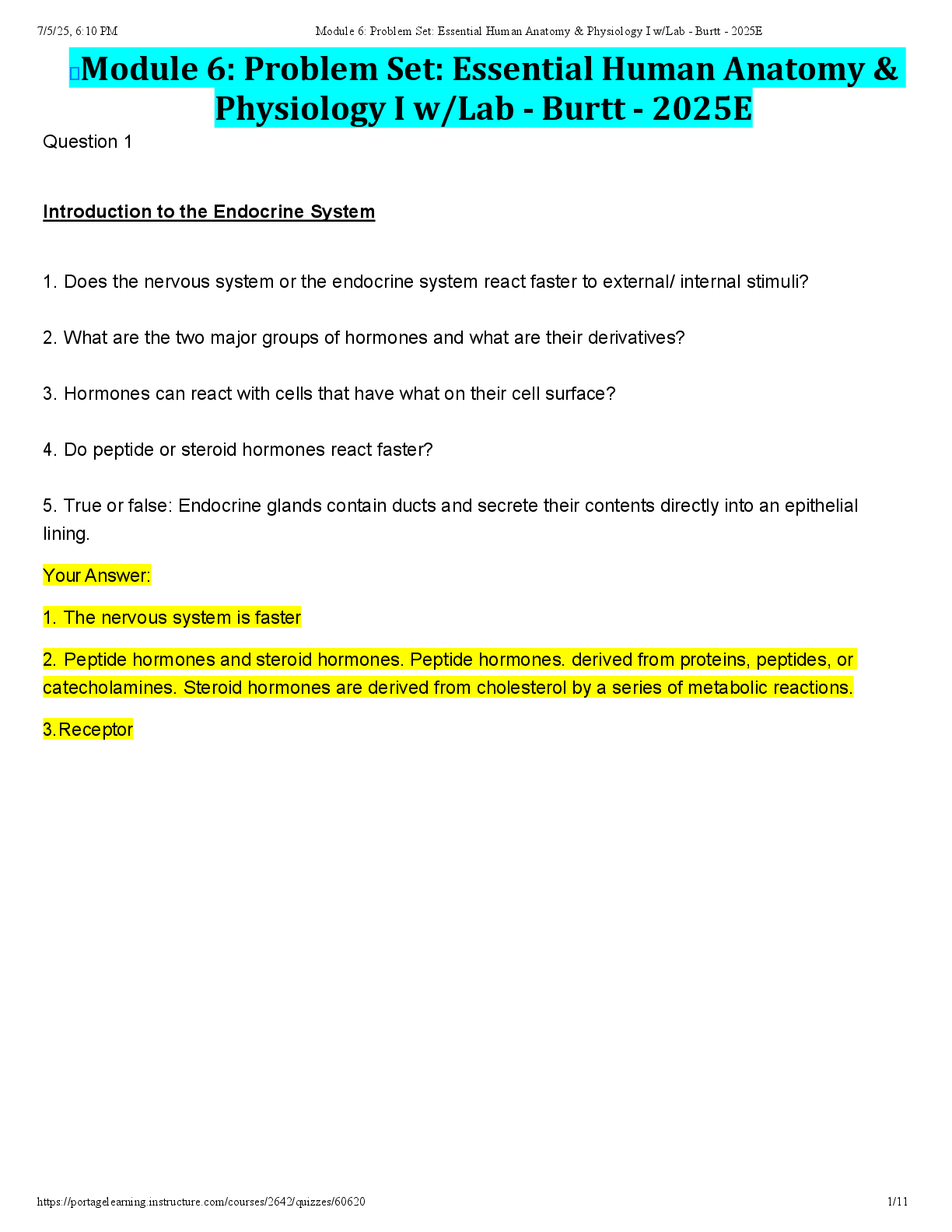
Buy this document to get the full access instantly
Instant Download Access after purchase
Buy NowInstant download
We Accept:

Reviews( 0 )
$12.50
Can't find what you want? Try our AI powered Search
Document information
Connected school, study & course
About the document
Uploaded On
Jul 15, 2025
Number of pages
11
Written in
Additional information
This document has been written for:
Uploaded
Jul 15, 2025
Downloads
0
Views
14
